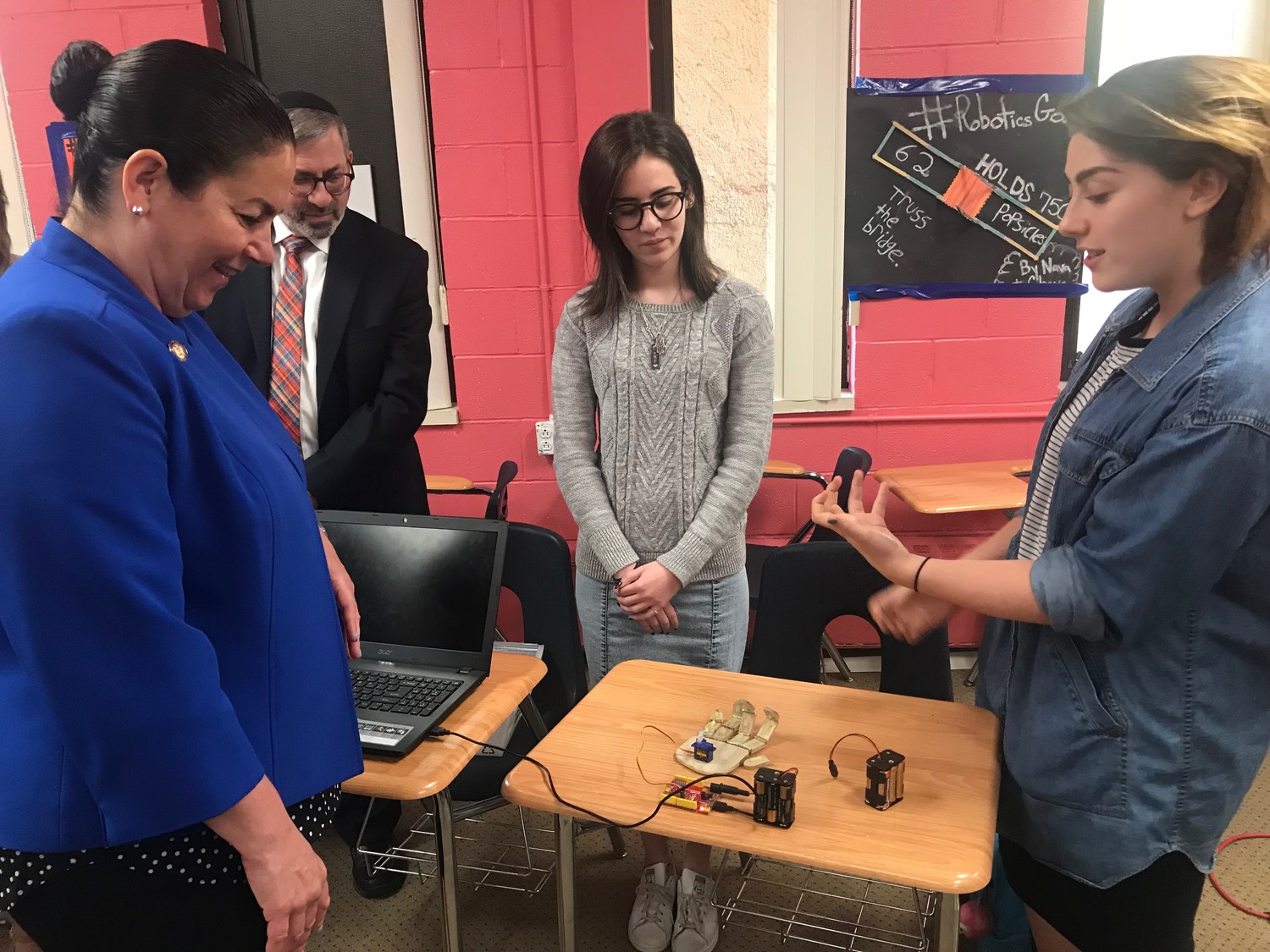Getting into science and tech at MSH
Science, technology, engineering and mathematics, or STEM education has spread across schools like wildfire as they look to prepare students for future professional occupations. New York state allotted $5 million for STEM instruction in non-public schools in the 2017-2018 budget. That number was tripled to $15 million dollars in the 2018-2019 budget.
State Assemblywoman Stacey Pheffer Amato (D-Rockaway Beach) visited Midreshet Shalhevet High School for Girls on May 29, a yeshiva located at 1000 Rosedale Road in North Woodmere, to see the school’s STEM program in action. Midreshet Shalhevet began offering the courses last year and coding became a requirement for all ninth-grade girls. More advanced STEM classes are offered as electives for students in the upper grades, including an Advanced Placement computer science course. “Most girls end up loving it,” said Esther Eisenman, the school’s principal. “Teens are now excited about technology.”
Teach NYS, a section of the Orthodox Union’s Teach Network, has been advocating for the increase. “The initiatives have also been backed by Catholic schools as well,” said Amato. “It’s all about educating, we all just focus on different parts.”
Amato got to see what the Midreshet Shalhevet students have been able to do with the newly allocated money. The students showed websites that they designed from scratch, some robotic projects they built and a large menorah they built out of PVC piping and wired to light up.
Leah Rubin, a sophomore, worked on the menorah as well as a robotic hand that her peers programmed to open and close. She explained the difference between what she learned last year and this year as, “In ninth grade it was about making things pop up on screen,” she said. “Now we’ve done more building, it’s been more about making things happen.”
Students have learned about programming, physical engineering and website coding, but Eisenman and Aliza Feder, who teaches the STEM elective course, believe that what they learn goes even deeper. “The biggest skill I think they’ve learned is problem solving,” Feder said.
With the amount of money for STEM programs in non-public schools increasing, Eisenman said the plan is to improve the school’s facilities and materials. They also plan on offering more training for the teachers so that they are better equipped to prepare students for the future. “STEM so critical in the 21st century,” she said. “The more exposure they have the better off they’ll be. They’ll be doing jobs that haven’t been invented yet.

 45.0°,
Mostly Cloudy
45.0°,
Mostly Cloudy 





